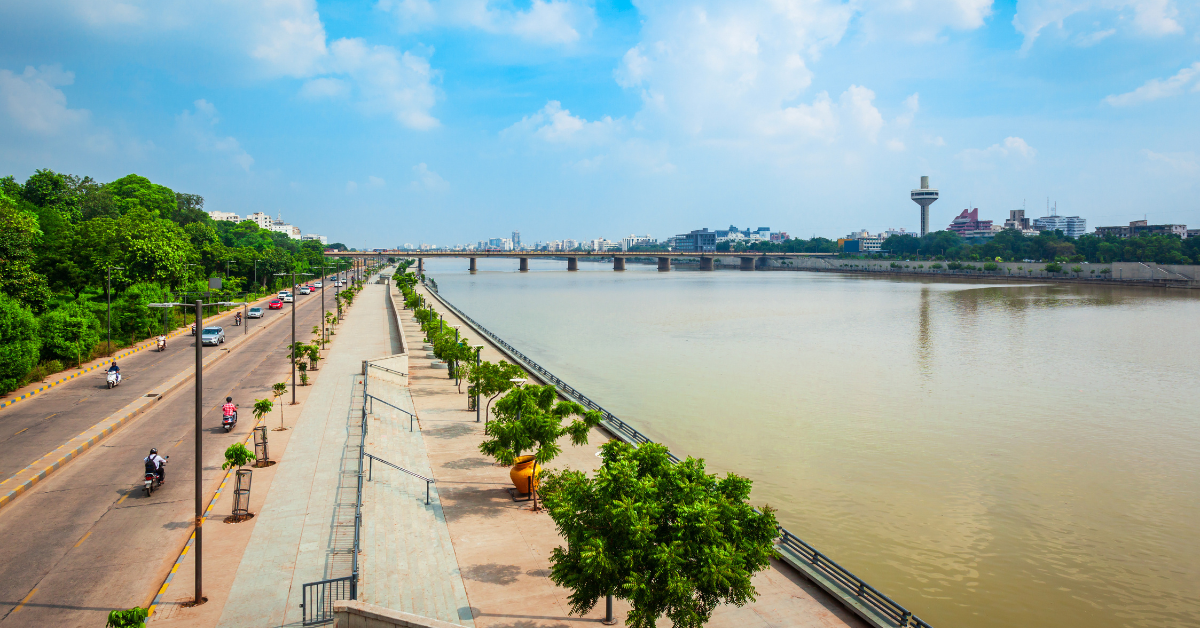Ahmedabad, the largest city in Gujarat, India, is a place of economic vitality, historical heritage, and cultural diversity. In Japanese, however, it has no Kanji representation and is expressed only in Katakana as “アフマダーバード.” This article explores the reasons behind this notation and examines how Japanese people perceive the city, from its industrial growth to its connection with Mahatma Gandhi.
Why There Is No Kanji Representation for Ahmedabad
Ahmedabad is a place name of Indian origin, and in Japanese, it does not have a Kanji representation. Unlike place names from China or the Korean Peninsula, which were historically transmitted through Kanji, Indian city names were almost never given Kanji characters in Japan. Therefore, the standard way to represent it is in Katakana as “アフマダーバード” to convey the sound accurately.
Here are variations of how the name is represented in local languages:
| Language | Script | Katakana Transcription |
|---|---|---|
| Gujarati | अमदावाद (amdāvād) | Amadāvād |
| Hindi | अहमदाबाद (ahmadābād) | Afumadābādo |
| English | Ahmedabad | Āmedabādo |
Thus, each language has a slightly different pronunciation, and in Japanese, the lack of a unified form is one reason for variation.
The Image Japanese People Have of Ahmedabad
For Japanese people, Ahmedabad is more known for business and history rather than tourism. It is widely recognized as “the Manchester of India” due to its flourishing textile industry, creating a strong impression as an economic city.
Additionally, the UNESCO World Heritage Site of the old city and the Sabarmati Ashram, where Mahatma Gandhi lived, are familiar to many Japanese through school education and media. These associations contribute to the impression of Ahmedabad as “a city that combines industry and history.”
| Image Among Japanese | Background |
|---|---|
| Economic city | Center of textile and manufacturing industries |
| Historic city | Old city registered as UNESCO World Heritage |
| City of Gandhi | Sabarmati Ashram |
| Academic city | Concentration of universities and research institutions |
Historical Background of Ahmedabad
Ahmedabad was founded in the 15th century and flourished under the Mughal Empire. Its unique culture developed from a fusion of Islamic and Hindu architecture, and many historic monuments remain today.
From the 19th century under British colonial rule, its textile industry rapidly expanded, making it known as “a symbol of India’s industrial modernization.” In the early 20th century, Gandhi based his activities here, making Ahmedabad a crucial site for the independence movement.
Sports Culture in Ahmedabad
Ahmedabad is also prominent in the field of sports. Cricket, in particular, enjoys national-level popularity, and the city is home to the world’s largest cricket stadium, the Narendra Modi Stadium. With a capacity of over 100,000 spectators, it hosts international matches and key domestic league games, bringing the city international recognition.
Besides cricket, football and badminton are gaining popularity, becoming part of everyday life for residents. Sports are not only for recreation but also boost the local economy and foster international exchange.
| Sport | Feature | Impression Among Japanese |
|---|---|---|
| Cricket | Home to the world’s largest stadium | Experience India’s national passion |
| Football | Popular among students and youth | Represents India’s growing sports culture |
| Badminton | Rising popularity as an indoor sport | Feels familiar and approachable |
Modern Attractions of Ahmedabad
Today, Ahmedabad has grown into a city where economy and culture coexist. In addition to textiles, it is gaining attention as a hub for IT and startups, attracting domestic and international investment.
Culturally, it has a unique food culture and traditional festivals. In particular, the annual Kite Festival in January is internationally renowned, with countless kites filling the sky and leaving a lasting impression on visitors.
Connections with Japan
Ahmedabad has been strengthening its ties with Japan, especially in the economic sector. Japanese companies have expanded here, engaging in automobile parts and textile-related manufacturing. Academic exchange between universities has also been progressing.
Furthermore, Japanese language education has begun in local institutions, forming a basis for mutual understanding between India and Japan.
| Field | Connection with Japan |
|---|---|
| Economy | Japanese companies entering manufacturing and infrastructure |
| Education | Academic and research collaborations between universities |
| Culture | Japanese language education and cultural exchange events |
Everyday Culture in Ahmedabad
Ahmedabad is a city where tradition and modernity coexist. In the old city, Islamic structures and Hindu temples stand side by side, while in the new city, modern shopping malls and high-rise buildings dominate the skyline.
Its cuisine is also rich. Gujarati food is largely vegetarian and considered healthy, making it appealing and approachable for Japanese visitors.
| Aspect of Life | Feature |
|---|---|
| Architecture | Mix of historic monuments and modern buildings |
| Food culture | Gujarati cuisine centered on vegetables |
| Festivals | Large celebrations such as the Kite Festival and Diwali |
Conclusion
Ahmedabad has no Kanji representation, and it is generally written in Katakana in Japanese. For Japanese people, it is recognized as an economic city, a historic city, and a hub of sports and culture.
With its UNESCO heritage sites, Gandhi’s legacy, the world’s largest cricket stadium, and international festivals, Ahmedabad provides a wide range of experiences. It is not just a business hub but also a place where visitors can feel the energy of modern India combined with deep tradition.






